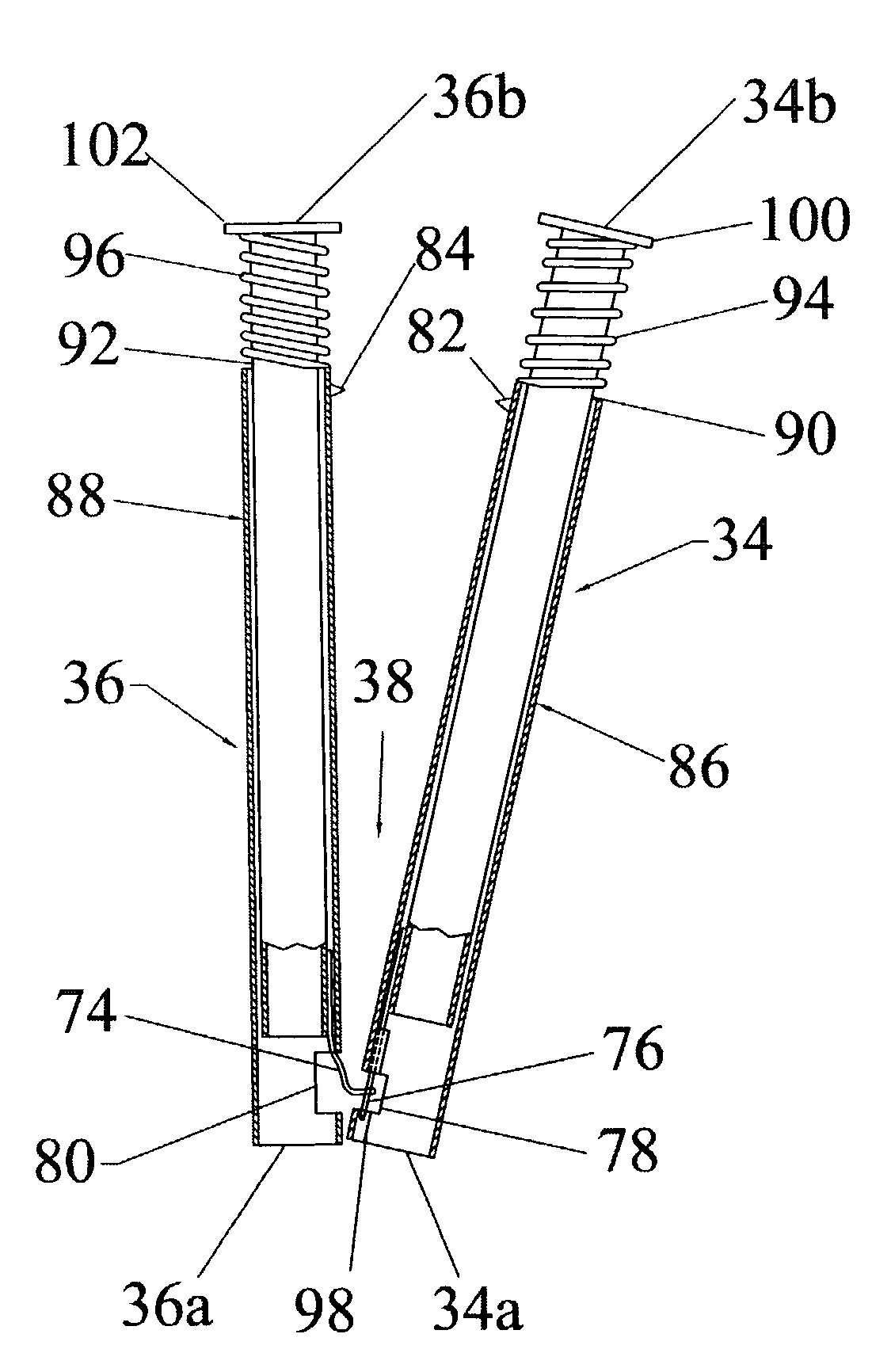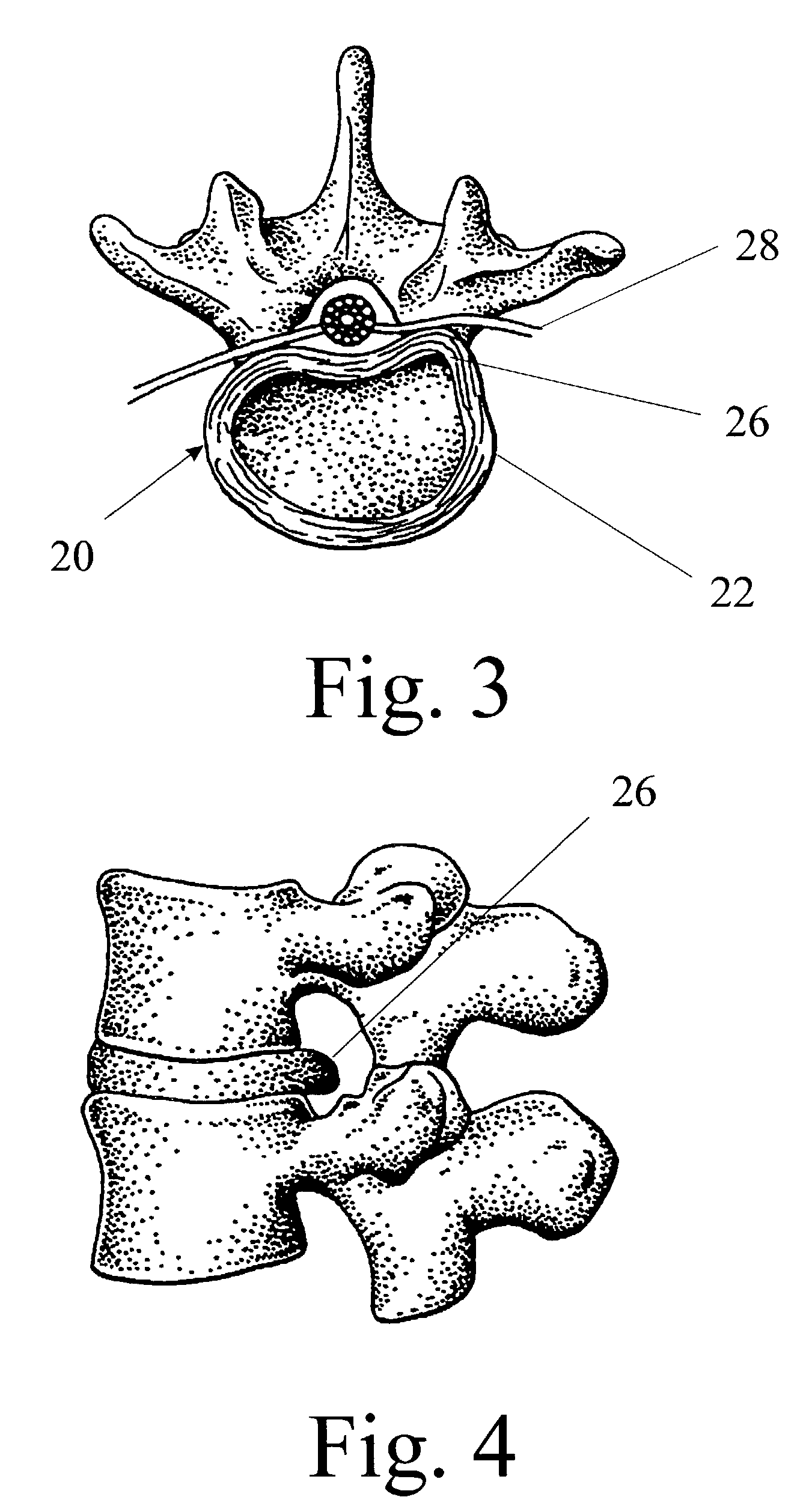Multiportal device and method for percutaneous surgery
a multi-portal device and percutaneous surgery technology, applied in the field of medicine, can solve the problems of long recovery time, postoperative scarring, and large scarring, and achieve the effect of avoiding risk and increasing the safety of surgery
- Summary
- Abstract
- Description
- Claims
- Application Information
AI Technical Summary
Benefits of technology
Problems solved by technology
Method used
Image
Examples
Embodiment Construction
[0045]A general side view of the device of the invention with cannulae inserted for use in percutaneous spinal surgery is shown in FIG. 5. FIG. 6 is a top view on a first cannula first guiding unit made, e.g., in the form of a guide barrel (hereinafter referred to simply as “barrel”) with an arm (the auxiliary clamping mechanism and cannulae are not shown). As shown in this drawing, the device, which in general is designated by reference numeral 30, consists of an guiding device 32 for insertion, positioning, and fixation of cannulae 34 and 36 (only two cannulae are shown in FIG. 5, although more than two can be used, if necessary) and a linking mechanism 38 provided in the cannulae 34 and 36 for interconnection of the distal ends of these cannulae when they are inserted into the patient's body (not shown) for surgery.
[0046]More specifically, the guiding device 32, which during operation is located outside the patient's body, is made in the form of a clampable barrel 40 having a cen...
PUM
 Login to View More
Login to View More Abstract
Description
Claims
Application Information
 Login to View More
Login to View More - R&D
- Intellectual Property
- Life Sciences
- Materials
- Tech Scout
- Unparalleled Data Quality
- Higher Quality Content
- 60% Fewer Hallucinations
Browse by: Latest US Patents, China's latest patents, Technical Efficacy Thesaurus, Application Domain, Technology Topic, Popular Technical Reports.
© 2025 PatSnap. All rights reserved.Legal|Privacy policy|Modern Slavery Act Transparency Statement|Sitemap|About US| Contact US: help@patsnap.com



